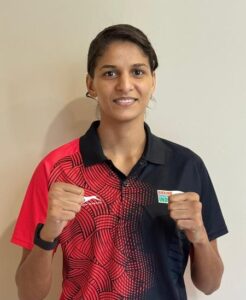How Indian audiences traded family sagas for psychological thrillers, transforming the subcontinent’s entertainment DNA

In dimly lit homes across India, millions abandon colourful Bollywood fantasies for blood-soaked crime sagas. Sacred Games broke barriers, Mirzapur shattered taboos, and suddenly everyone craves darkness. But here’s the twist: it’s not metros driving this revolution; it’s small-town India secretly bingeing psychological thrillers.
The notification pings at midnight. Across India’s digital landscape from Bengaluru’s tech corridors to Indore’s quiet neighbourhoods’ screens illuminate faces transfixed by blood, betrayal, and moral decay. Where once families gathered around televisions for sanitized sagas of virtue triumphant, now solitary viewers clutch smartphones, hearts racing as antiheroes navigate corruption’s labyrinth. The saris and bhangra beats have given way to bullets and psychological breakdowns. India hasn’t just changed channels, it has rewired its entertainment DNA.
The transformation has been seismic. Where Bollywood once served audiences a steady diet of escapist entertainment wrapped in vibrant choreography and moral certainties, today’s Indian content ecosystem thrives on moral ambiguity, psychological complexity, and narratives that would have been dismissed as “too Western” just a decade ago.
The Numbers Tell the Story
The shift isn’t merely anecdotal it’s quantifiable. Netflix’s ‘Sacred Games,’ Prime Video’s ‘Mirzapur’ and SonyLIV’s ‘Scam 1992’ are the top three among the all-time 50 Indian streaming series on IMDb. This triumvirate of darkness crime, corruption, and moral decay represents a fundamental departure from traditional Indian entertainment preferences.
The OTT market in India, which includes subscription revenue, is worth around ₹10,500 crore. It’s expected to grow by 20% each year, reaching ₹12,000 crore by FY 2024 and ₹30,000 crore by FY 2030. This explosive growth coincides directly with the proliferation of dark content, suggesting audiences are not just consuming but actively seeking these narratives.
The success of Sacred Games alone redefined what Indian content could achieve globally. Produced and directed by Vikramaditya Motwane and Anurag Kashyap under the banner of Phantom Films, it is India’s first Netflix original series. Its success opened floodgates for content that explored India’s underbelly without the sanitization traditionally expected from mainstream entertainment.
The Anatomy of Darkness: What Changed
From Masala to Menace
Traditional Indian entertainment followed predictable formulas: hero’s journey, moral clarity, family values, and ultimately, good triumphing over evil. The new dark content ecosystem operates on entirely different principles. Shows like Mirzapur revel in moral ambiguity where protagonists are simultaneously victims and perpetrators. Scam 1992 transforms a financial criminal into a complex antihero whose journey audiences follow with fascination rather than judgment.
This shift represents more than stylistic evolution it’s a fundamental reimagining of Indian storytelling. Where traditional content provided answers, dark content poses uncomfortable questions. Where family entertainers offered escape, psychological thrillers force confrontation with societal realities.
The OTT Revolution: Platform as Catalyst
The rise of dark Indian content is inextricably linked to the OTT revolution. Unlike traditional television or cinema, streaming platforms offered creators unprecedented creative freedom. Without censorship boards breathing down their necks or advertisers worrying about brand safety, storytellers could finally explore themes previously considered taboo.
Major OTT platforms like Netflix, Prime Video, SonyLIV, Disney + Hotstar, and Hoichoi have curated an impressive mix of shows. This diversification allowed for niche content that traditional broadcasters would have rejected as commercially unviable.
The platforms also brought global sensibilities to Indian content creation. Exposure to international dark content from Breaking Bad to Narcos demonstrated that audiences globally craved complex, morally ambiguous narratives. Indian creators seized this opportunity to craft locally rooted but universally appealing dark content.

The Demographics of Darkness: Who’s Watching?
The Urban, Educated, and Connected
The primary consumers of dark Indian content represent a specific demographic: urban, educated, and digitally connected Indians aged 18-35. This cohort possesses several crucial characteristics:
Higher Education Levels: Rising literacy rates and higher education exposure have created audiences capable of appreciating narrative complexity. Unlike previous generations who sought entertainment primarily for escapism, this demographic engages with content intellectually and emotionally.
Global Connectivity: Social media and global content exposure have internationalized viewing preferences. These audiences, comfortable with subtitles and non-linear storytelling, don’t require the hand-holding traditional Indian content provided.
Economic Independence: With disposable income to afford multiple streaming subscriptions, this demographic can choose content based on personal preference rather than family consensus.
The Psychology of Darkness: Why We Crave Chaos
The appetite for dark content reflects deeper sociological shifts in Indian society. Modern India grapples with rapid urbanization, economic inequality, political corruption, and social transformation. Dark content provides a safe space to process these anxieties.
Cathartic Release: Psychological thrillers and crime dramas allow viewers to experience danger vicariously while remaining physically safe. The adrenaline rush of suspense provides cathartic release from daily stresses.
Reality Recognition: Unlike escapist entertainment that ignores societal problems, dark content acknowledges them. Audiences appreciate this honesty, finding validation for their own observations about corruption, violence, and moral decay in society.
Sophistication Signalling: Consuming complex, dark content has become a form of cultural capital. It signals sophistication, international awareness, and intellectual depth qualities increasingly valued in urban Indian social circles.
Case Studies in Darkness
Sacred Games: The Pioneer
Netflix’s Sacred Games didn’t just launch India’s dark content revolution it legitimized it globally. The show’s unflinching portrayal of Mumbai’s criminal underworld, complete with police corruption, political machinations, and religious extremism, established that Indian audiences were ready for uncompromising narratives.
Scam 1992: The Antihero’s Rise
SonyLIV’s Scam 1992 transformed Harshad Mehta from a forgotten financial criminal into a complex protagonist. The show’s success demonstrated that Indian audiences could empathize with morally ambiguous characters a significant departure from traditional hero worship.
Delhi Crime: Global Recognition
Netflix’s Delhi Crime won an International Emmy, proving that Indian dark content could achieve global critical acclaim while addressing local issues. The show’s sensitive handling of the 2012 Delhi gang rape case showed how dark content could tackle serious social issues without sensationalisation.
The Technology Factor: Democratizing Darkness
The proliferation of smartphones and affordable internet has democratized content consumption. The Ormax study on supply trends highlights that only 9% of streaming originals released in 2024 catered to regional languages outside Hindi, Tamil, and Telugu. This data reveals both the current limitations and future potential for dark content expansion across India’s linguistic diversity.
High-speed internet and smartphone penetration have eliminated traditional gatekeepers. Viewers can now access content directly, without family or community filtering. This technological shift enabled the consumption of content that might have been considered inappropriate or unsuitable for “family viewing.”
The Future of Indian Darkness
The trend toward dark content shows no signs of abating. As India’s young population becomes increasingly urbanized and globally connected, demand for sophisticated, challenging content will likely increase. However, this evolution raises important questions about cultural authenticity and the balance between global appeal and local relevance.
The challenge for creators will be maintaining the cultural specificity that makes Indian dark content distinctive while crafting narratives that resonate with increasingly international audiences. The success of shows like Sacred Games and Delhi Crime on global platforms suggests that authentically Indian stories, told with unflinching honesty, can find universal audiences.
Embracing the Shadows
The rise of dark Indian content represents more than entertainment evolution it reflects a society coming to terms with its complexities. As India transforms from a developing to a developed nation, its entertainment ecosystem mirrors this journey, embracing the shadows alongside the light.
This transformation hasn’t eliminated traditional entertainment but has created space for diverse narratives. The same audiences who enjoy Mirzapur’s violence can appreciate a family comedy, suggesting that dark content hasn’t replaced traditional entertainment but has expanded the available palette.
The revolution is far from over. As India’s streaming market continues its projected growth, and as new creators gain access to global platforms, we can expect even more daring explorations of the human condition. The question isn’t whether dark Indian content will continue to thrive, it’s how much darker, more complex, and more psychologically sophisticated it will become.
In embracing darkness, Indian content has paradoxically found its light the light of global recognition, critical acclaim, and most importantly, authentic self-expression. The masala may have given way to mayhem, but in that transformation, Indian storytelling has discovered its most powerful voice yet.



I feel you girl! But I would have wanted a special focus on UP here!
From Mirzapur to Paatal Lok, several shows are set in backdrop of the state, telling stories of brutal family feuds and violent murderers.
Imagine a land of ‘Ganga-Jamuni’ tehzeeb…of culture and Ghalib…..has now become the Hub of OTT CRIMES!!!!